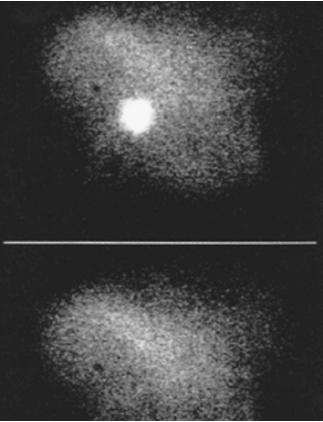Neutron star
A neutron star is the dead remnant of a massive star. A star reaches the end of its life when it uses up all of its nuclear fuel. Without fuel, it cannot undergo nuclear fusion, the process that pushes matter outward from the star's core and provides a balance to its immense gravitational field. The fate of a dying star, however, depends on that star's mass.
A medium-sized star, like the Sun, will shrink and end up as a white dwarf (small, extremely dense star having low brightness). The largest stars—those more than three times the mass of the Sun—explode in a supernova and then, in theory, undergo a gravitational collapse so complete they form black holes (single points of infinite mass and gravity). Those stars larger than the Sun yet not more than three times its mass will also explode in a supernova, but will then cave in on themselves to form a densely packed neutron star.
Origin of a neutron star
A neutron star is formed in two stages. First, within a second after nuclear fusion on the star's surface ceases, gravity crushes the star's atoms. This forces protons (positively charged particles) and electrons (negatively charged particles) together to form neutrons (uncharged particles) and expels high-energy subatomic particles called neutrinos. The star's core, which started out about the size of Earth, is compacted into a sphere less than 60 miles (97 kilometers) across.
In the second stage, the star undergoes a gravitational collapse and then, becoming energized by the neutrino burst, explodes in a brilliant supernova. All that remains is an extremely dense neutron core, about 12 miles (19 kilometers) in diameter with a mass nearly equal to that of the Sun. A sugar-cube-sized piece of neutron star would weigh billions of tons.
Neutron stars spin rapidly. This is because the original stellar core was spinning as it collapsed, naturally increasing its rate of spin. Neutron stars also have intense gravitational and magnetic fields. The gravity is strong because there is so much matter packed into so small an area. The spinning generates a magnetic field, and the star spews radiation out of its poles like a lighthouse beacon. Neutron stars give off radiation in a variety of wavelengths: radio waves, visible light, X rays, and gamma rays.
Pulsars
If the magnetic axis of the neutron star is tilted a certain way, the spinning star's on-and-off signal can be detected from Earth. This fact led to the discovery of the first neutron star in 1967 by English astronomer Antony Hewish and his student Jocelyn Bell Burnell.
Words to Know
Black hole: Remains of a massive star after it has exploded in a supernova and collapsed under tremendous gravitational force into a single point of infinite mass and gravity.
Neutrino: A subatomic particle resulting from certain nuclear reactions that has no charge and possibly no mass.
Nuclear fusion: Process in which the nuclei of two hydrogen atoms are fused together at extremely high temperatures to form a single helium nucleus, releasing large amounts of energy as a by-product.
Pulsar: Rapidly rotating neutron star that emits varying radio waves at precise intervals.
Radiation: Energy transmitted in the form of electromagnetic waves or subatomic particles.
Subatomic particle: Basic unit of matter and energy (proton, neutron, electron, neutrino, and positron) smaller than an atom.
Supernova: Explosion of a massive star at the end of its lifetime, causing it to shine more brightly than the rest of the stars in the galaxy put together.
White dwarf: Small, extremely dense star having low brightness.
Hewish and Bell Burnell were conducting an experiment to track quasars (extremely bright, distant objects) when they discovered a mysterious, extremely regular, pulsing signal. They found similar signals coming from other parts of the sky, including one where a supernova was known to have occurred. With the help of astronomer Thomas Gold, they learned that the signals matched the predicted pattern of neutron stars. They named these blinking neutron stars pulsars (from pulsating stars).
Since then, more than 500 pulsars have been catalogued, including many in spots where a supernova is known to have occurred. Pulse rates of observed neutron stars range from 4 seconds to 1.5 milliseconds. Scientists believe that more than 100,000 active pulsars may exist in our galaxy.
[ See also Star ; Subatomic particles ; Supernova ]

I wish to correct something mentioned under 'words to know' mentioning black holes having an 'infinite' density and mass. This is not correct. They have a very specific and predictable mass that can be measured by the effects of it gravity on the environment. If the black hole did indeed have infinite mass, the universe would impled into it in an infinitely small amount of time.
Apart from that, I thoroughly enjoyed your X-ray images of the crab.
Best regards,
John Orhan
appears to be rather great. Thus, despite they are not spectacular, some details about the whole neutron star lifetime would be of great interest. Indeed through their number they perhaps contribute not negligibly to the various cosmic radiations. Do you khow something?
Francois Plouin